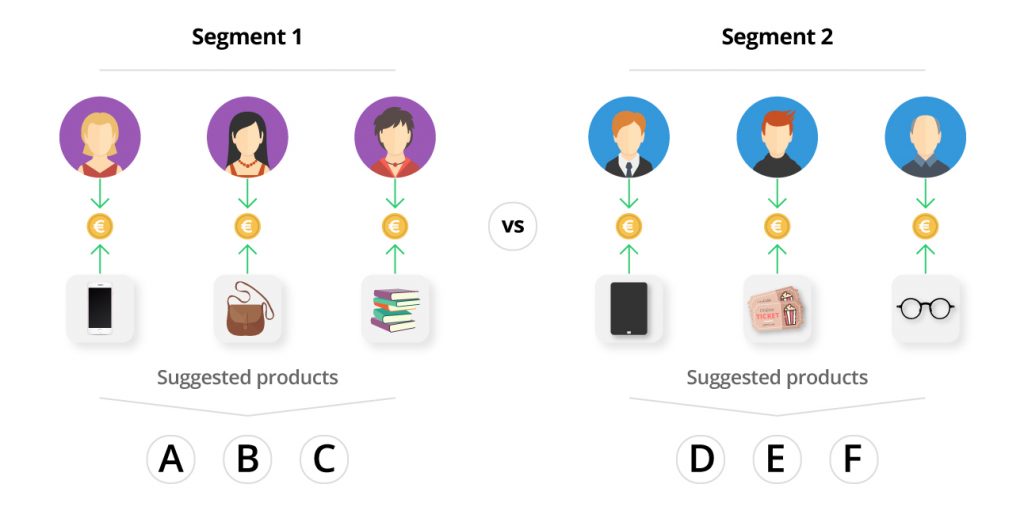If you’re in any kind of online business today, you should know about the importance of nurture campaigns in eCommerce and the best practices on how to design successful nurturing sequences.
Why? The reason is simple. In the landscape where competition is just one search or clicks away, rarely do a business score a sale on the first outreach or visit session. Or the second. But with a consistent lead nurturing strategy, you can turn the corner for your marketing efforts. A DemandGen report showed that 4%-10% higher response rate when measured against solitary email campaigns.
Ecommerce owners and marketers, even those using Shopify, take note: If you’re going to turn qualified opportunities into sales and company revenue, then you’ll have to understand the promise and realities of successful email nurturing. Let’s take a look at some nurture campaign best practices, and get your B2C email marketing efforts moving up.
The Nurture Campaign FAQ: All the answers you need
Q: What is a nurture campaign?
A nurture campaign is closely related to nurture marketing. It is a series of automated email/push notification/SMS workflows a company sends to its email subscribers in order to create better, long term relationships and earn their trust. The ultimate goal is to move them at the bottom of the sales funnel and finally purchase the product/service.
Q: How long should a nurture campaign be?
The length of a nurture campaign can greatly vary from industry to industry. The more expensive a product or service is, the more time it will take to convert a lead to a customer, thus the longer the nurture campaign should be. I good time frame to start is to design a nurturing workflow of at least 30 days.
Q: What is a drip marketing campaign?
Drip marketing is a series of triggered messages that are sent to potential customers (leads, email subscribers), following a specific action they took. Drip campaigns aim to maximize the chances of conversion for a company, serving the most personalized experience possible.
Do I need Lead Nurturing Emails in eCommerce?
Yes. At its core, as we said, lead nurturing refers to the process of convert prospects that fit your target audience into customers. It’s all about nurturing these leads into your business’ sales cycle. That often takes time! Nearly half of the businesses polled by Ascend2 found that lead nurturing is a long, complex sales cycle, complete with help from many influencers.
The end goal of nurturing emails is to shine a light on your products while establishing a brand rapport with your potential customers. Building trust with customers is often a gradual process. Hence, with each successive email, your objective is to open up the path to a sale when the time is right.
Industry insights show that at least half of your leads aren’t interested in buying from you upon the first encounter and this applies to eCommerce as well. The first email may provoke interest, and perhaps even a click-through, but it’s an unlikely first-at-bat sale in the making. Recent data from Hubspot shows that 65% of businesses say their biggest marketing challenge is generating traffic and leads.
Yet, don’t lose heart. With email nurturing, you have the ability to help guide prospects within your sales funnel, instead of losing them forever. A lead nurturing email campaign can be the nudge that pushes your email subscribers to get to know your brand better, engage with it and massively increase the chances to convert. This is why running a blog is super effective for eCommerce (as well). It’s the perfect content to serve through your nurture campaign that is not perceived as “hard selling”. Enough said, let’s see all the best practices for your nurture campaigns!
5 Best Practices for eCommerce Nurture Campaigns
Nurture Campaign Best Practice #1: Start with a Welcome email

Nurturing Emails: Welcome Series from Trade Coffee
A good start to your email nurturing sequence is to introduce your brand/company with a light touch.
Keep it simple. Trade Coffee Co provides a great example of a welcome email that’s simplistic yet convincing.
The structure:
- Say hello to new subscribers.
- Introduce your company, your mission, and what makes you different.
- Professional copy and design to build trust.
- Share social media accounts with the prospect for more opportunities to engage with your brand.
If you can, personalize your email. Take the opportunity to tailor your email to the shared interest from your lead. A personalized approach can resonate much more with your prospect. This example from Brainshark, a B2B software service, shows that personalized emails and targeted content helped Brainshark convert free customers into paying customers.
Nurture Campaign Best Practice #2: Team up with Customer Support
Your customer support team is the ear of your business. If you truly want to learn what customers are saying about your products and services, sit down with your customer support teams and listen for feedbacks.
Find out the pain points and the preferences of your customers. Try to specify which area these pain points belong – Process failing? Expectation gaps? Pricing barrier? It’s important to get insights into specific pain points and customer support that can be used within your nurturing emails.
Most likely, the feedback from your current customers are the same decision factors prospective customers are considering. Getting vital feedback from your customer support reps helps to involve them in the overall marketing push and gives you ample ammunition to use in your email nurture process.
Nurture Campaign Best Practice #3: Use segmentation to enhance your nurturing emails
One of the pro tips for managing an email nurture campaign is to target your prospects with segmentation.
For example, you can segment by gender, by geo-location, or by specific interests. You can even segment by the type of activity exhibited on your website. Did the prospect spend a lot of time on your specs and pricing pages? Or did the lead only look at discounts for specific products? Use this information to tailor email nurture copy for a particular segment of prospect. The best way is to leverage a behavior triggered marketing automation tool to track visitor behaviors to generate more targeted audiences.

Audience segmentation by browsing history and interests
Also, it’s critical that your email information is relevant to the prospect. You want the leads to open and take in the information. To do this right, including content that may be of interests to the recipients. Such as the product category they have been looking into or helping them stay on top of the trends. Keep to the point and timely, with helpful information to get them to purchase from your company.
Nurture Campaign Best Practice #4: Be mindful of timing
The frequency of emails can help or hurt a brand. If your prospects are receiving nurturing emails from you too frequently, they may turn away from your offerings. If you give your prospects too much time in between emails, you might lose their business to a competitor.
Many marketers use a rule of thumb that posits the longer a sales process might take, the time in between emails should match this. For example, a furniture retailer selling $1K worth of furniture probably shouldn’t be emailing their prospects weekly with news, whereas a fashion apparel store should keep a more frequent touch.
If you’re unsure of how long to wait in between emails, experiment with different timings. Try a spread between 9 – 35 days, and see how your audience respond within the different timeframe.
Nurture Campaign Best Practice #5: Measure & Evaluate on a regular basis
Measurement of your email marketing campaign progress is critical. If your initial efforts are falling short of expectations, you’ll need to adjust your outreach. Set up KPIs for each of the emails within the sequence and evaluate the effectiveness of each message.
Key Metrics that should be tracked are:
- Total recipients sent
- % Open
- % Clicked thru
- % Conversions (direct or even indirect ones)
- Total value generated

Nurturing Emails: Typical KPIs Examples
Try AB testing on your campaigns. See which is performing better with prospects. Close monitoring of results will help you and your team to better optimize the messages, and see if you’re resonating with multiple emails. Of course, don’t forget to track your overall eCommerce KPIs as a result of the nurturing campaigns.
6 mistakes you should avoid at your nurture email strategy
You should focus on implementing the above nurture campaign best practices, but you should definitely avoid doing the following:
- Don’t let segmentation rules for later, otherwise, it will never happen.
- Don’t deliver the same message/campaign to different audiences/segments. It will skyrocket your unsubscribes.
- Don’t you a “do not reply” sender name for your nurture campaigns. Ever.
- Don’t do it manually. Don’t even try it isn’t scalable and a complete waste of resources. Buy marketing automation software.
- Don’t overdo it. A good frequency once a week, but contacting your email lists more than 3 times per week can lead to LOTS unsubscriptions.
- Don’t forget about reporting. It’s super insightful to spend time studying the numbers once a month, to decide which email workflows need improvements and optimization
Don’t fall back
Creating nurturing campaigns is an art and a science. It’s the mark of a savvy business person to use nurture campaign best practices and tactics. Yes, setting up the right email sequence may be time-consuming and sometimes difficult to optimize. But it works!
It’s obvious that experimenting and developing your own nurture email best practices will only help your overall marketing efforts. Stay committed, always think forward to what your prospects might want, and be positive, upbeat and friendly in your messaging. That positivity will shine through in your email campaigns.





